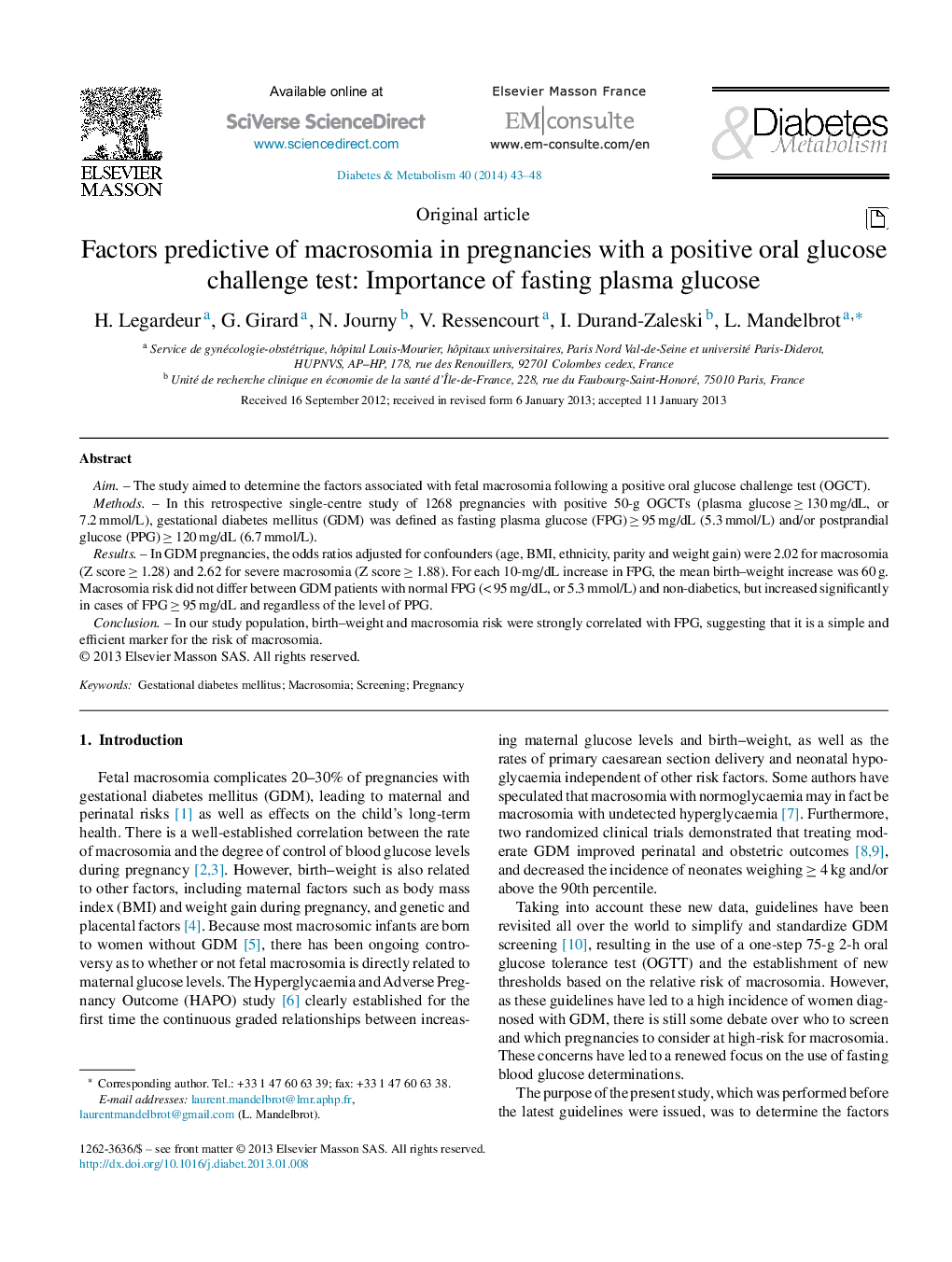| Article ID | Journal | Published Year | Pages | File Type |
|---|---|---|---|---|
| 3259388 | Diabetes & Metabolism | 2014 | 6 Pages |
AimThe study aimed to determine the factors associated with fetal macrosomia following a positive oral glucose challenge test (OGCT).MethodsIn this retrospective single-centre study of 1268 pregnancies with positive 50-g OGCTs (plasma glucose ≥ 130 mg/dL, or 7.2 mmol/L), gestational diabetes mellitus (GDM) was defined as fasting plasma glucose (FPG) ≥ 95 mg/dL (5.3 mmol/L) and/or postprandial glucose (PPG) ≥ 120 mg/dL (6.7 mmol/L).ResultsIn GDM pregnancies, the odds ratios adjusted for confounders (age, BMI, ethnicity, parity and weight gain) were 2.02 for macrosomia (Z score ≥ 1.28) and 2.62 for severe macrosomia (Z score ≥ 1.88). For each 10-mg/dL increase in FPG, the mean birth–weight increase was 60 g. Macrosomia risk did not differ between GDM patients with normal FPG (< 95 mg/dL, or 5.3 mmol/L) and non-diabetics, but increased significantly in cases of FPG ≥ 95 mg/dL and regardless of the level of PPG.ConclusionIn our study population, birth–weight and macrosomia risk were strongly correlated with FPG, suggesting that it is a simple and efficient marker for the risk of macrosomia.
